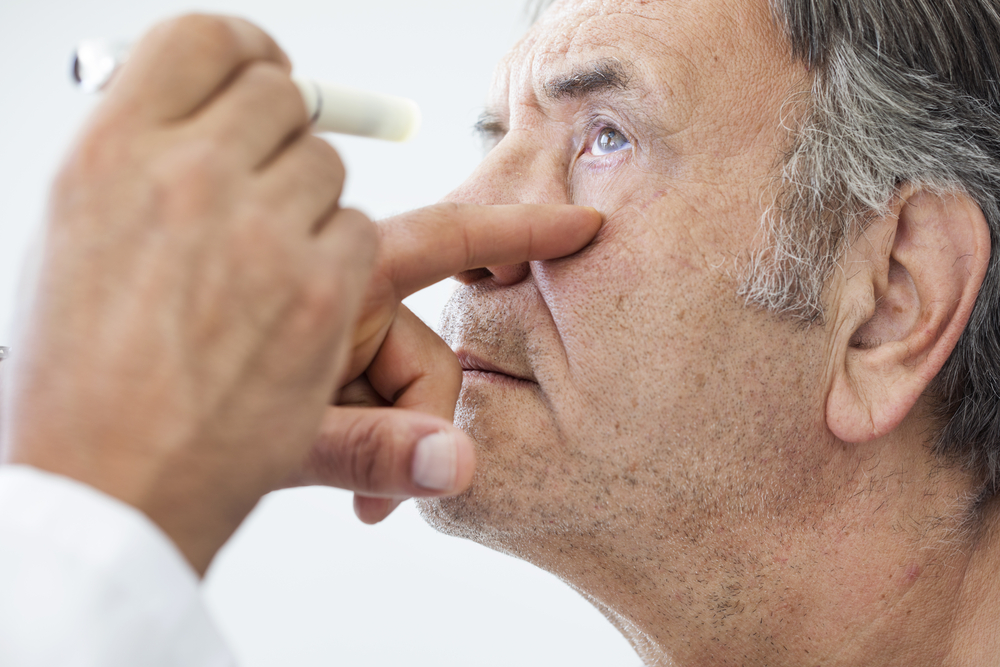Cataracts

What is a cataract?
Cataracts are a natural result of ageing. The eye’s natural crystalline lens helps us focus on people and things at varying distances. As we grow older, this lens gradually changes to become less transparent (clear), which leads to cloudy or misty vision – also known as cataracts. Over time, a cataract can get progressively worse and gradually make your vision cloudier.
While they can still impact younger people, cataracts are most typically related to age. You can get cataracts for other reasons – such as after surgery, an eye condition like glaucoma or an injury to your eye – but most cataracts occur over the course of several years as you get older.
While there is no known way to prevent cataracts, there are things you can do to slow their formation. This includes avoiding risk factors such as smoking or sunlight.
How do cataracts develop?
No matter the cause or type of cataract, its formation follows the same process: the proteins and fibres inside the lens of your eye start to break down. This forms ‘clumps’ that cause your vision to become cloudy and hazy, ultimately stopping your lens from sending clear visuals to your retina. This then sends cloudy images through the optic nerve and into your brain.
Who gets cataracts?
Cataracts in elderly people is the most common scenario, however it can still impact other age groups – even children and babies.
While it is possible to get cataracts at a young age, age-related cataracts – which are the most common – increase significantly over the years, from 16% of those aged 40 to 49 years old, to 79% among those aged 70 and over.
In terms of its prevalence in different sexes, studies into how estrogen plays a role in the formation of cataracts have shown that they are more common in women than in men.
Cataracts in babies
Normally, babies are born with a transparent lens in each eye that brings objects into focus, making it possible for the eye to see. However, even babies can develop cataracts, usually due to hereditary factors.

In these instances, rather than a transparent lens, some babies are born with a milky white lens, which is too cloudy to focus on objects.
Congenital cataracts are usually detected during the newborn examination after a baby is born.
How common are they?
Cataracts – especially age-related cataracts – are extremely common as you reach old age, with most people developing some form of cataract in one or both eyes by the age of 80. Aside from agerelated cataracts, environmental factors such as smoking and sun damage can increase the probability of getting cataracts, in addition to other factors like surgery, eye injuries or conditions like glaucoma.
What causes cataracts?
While cataracts can occur as a result of other eye diseases, they mostly develop naturally with age. There are many different risk factors that can contribute to your risk of developing cataracts. Here are some of the biggest causes and risk factors.
- Diabetes: Diabetes patients are more at risk of developing cataracts than others, and it’s one of the major causes of visual impairments in diabetics.
- Smoking and tobacco chewing: There is a clear link between people who smoke and an increased risk of getting cataracts.
- Corticosteroids: Taking corticosteroids can raise the risk of getting cataracts, with there being a clear link between corticosteroids causing cataracts.
- Exposure to sunlight: Even low exposure to ultraviolet-B (UVB) from sunlight can increase the risk of cataracts, particularly for people who consume a diet rich in carbohydrates and unsaturated fats.
- Hypertension (high blood pressure).
- Eye surgery.
- Obesity.
- Eye injury or inflammation.
- Heavy alcohol use.
- Family history of cataracts.
- Radiation exposure due to X-rays and cancer treatments.

Cataract symptoms
At first, symptoms or signs of cataracts may be undetectable or only very slight. Over the years, however, they may become more apparent and even impair your day-to-day activities.
Because the onset of cataracts is often drawn out, any noticeable change in your vision may be cause for concern and should be brought to the attention of an eye care professional. To help you understand what may be a sign of cataracts, here are the most common symptoms:
- Blurry vision where everything you look at appears cloudy
- Difficulty with vision at night and in dark spaces
- Sensitivity to light and glare
- The appearance of ‘halos’ in your vision
- Frequent prescription changes for glasses or contact lenses
- Colour vision changes and dimming
- Fading or yellowing of colours
- Experiencing ‘double vision’ in a single eye
These symptoms can also be a sign of other eye conditions. If you have any of the symptoms, please check with your eye care practitioner.
Cataracts treatment
In the early stages of cataracts, vision may be slightly improved using forms of visual correction. However, in the later stages, surgery is often required. Fortunately, cataract surgery has proven to be extremely successful in the removal of cataracts and providing greater quality of life for patients.
During surgery, your ophthalmologist will replace your natural lens with an intraocular lens (IOL or artificial lens). There are various IOLs that your ophthalmologist may use for your surgery:
- Monofocal IOLs: Monofocal IOLs provide clear vision at one focal point. Usually both eyes are corrected for distance.
- Monofocal Toric IOLs: Monofocal Toric IOLs not only provide clear vision at one focal point, but also correct for astigmatism.
- Trifocal IOLs: Trifocal IOLs are designed to correct the full range of vision, from far to intermediate and near vision, often reducing the need for spectacles.
When to see a doctor
While the symptoms of early stage cataracts may be invisible, as soon as you notice a change in your vision – such as blurriness, halos or clouded vision – then you should speak to a medical professional or eye care specialist. Even an increased sensitivity to light, poor night vision, distorted vision or constant glare can be reason to seek out medical advice about potential cataract formation.

Your medical professional will usually diagnose cataracts through an eye examination.
FAQ
Can early-stage cataracts be reversed?
No. Currently, early-stage cataracts cannot be reversed; however, you can take preventative steps to help slow progression.
Can cataracts run in the family?
While most people will have experienced at least some form of cataracts by the time they turn 80, it’s also important to look at family history, as cataracts can run in the family.
Can cataracts cause presbyopia?
Cataracts are often linked with presbyopia, but generally the term presbyopia refers to far or longsightedness, which typically occurs in middle and old age.
For more FAQs related to cataracts and cataract surgery please click here.

